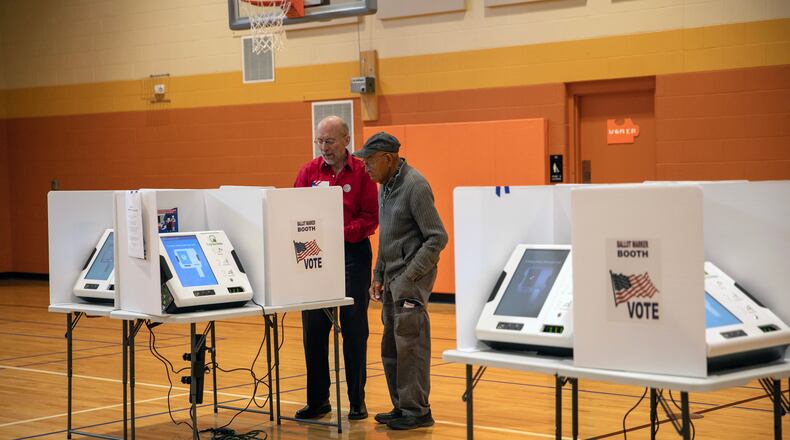The coalition behind the proposal, which calls itself the Secure and Fair Elections campaign, can edit their submission, recollect 1,000 signatures required for submission, and file again with the A.G.’s office at any time.
The three page denial letter from Yost specifies several instances where the AG’s office believes the summary is insufficient, including the title “Secure and Fair Elections.”
“While the petitioners may believe that these proposed regulations may ultimately result in secure and fair elections, the title is completely untethered to the actual substance of the proposed amendment,” Yost wrote. “Thus, the title is misleading and fails to fairly and truthfully describe the content of the proposed amendment.”
“The above instances are just a few examples of the summary’s omissions and misstatements, and further review will be undertaken should the matter be resubmitted,” the letter concludes.
Original story published Dec. 22 at 3:52 p.m.:
A sweeping state constitutional amendment to protect and expand Ohioans’ voting rights took its first official step toward getting on the ballot this week.
The proposed amendment would establish the right to vote as a fundamental right and bar the state from using “any means whatsoever” to intentionally or unintentionally interfere with an of-age Ohioan’s right to vote.
It too would create an automatic, opt-out voter registration system; allow for same day voter registration and registration changes; remove automatic voter roll purges triggered by four years of voting inactivity; and give county boards of elections the ability to have more than one ballot drop box and the power to generally increase voter accessibility.
The proposed amendment text and an accompanying summary were sent to Ohio Attorney General Dave Yost, who has until Dec. 28 to determine whether the summary accurately reflects the full text before sending it on to the Ohio Ballot Board, which determines whether the proposed amendment is indeed a singular issue.
After that, the amendment would need over 400,000 signatures, spread across the state, in order to appear on the ballot and be voted on directly by Ohioans. A simple majority would enshrine the text in the Ohio Constitution.
The proposal might sound familiar to many Ohioans. There was a similar amendment back in 2020 backed by coalition named Ohioans for Secure and Fair Elections, which included the ACLU of Ohio. That iteration of an expansive voting-rights expansion received permission to begin collecting signatures but was disrupted by the COVID-19 pandemic and was ultimately suspended in June 2020.
This time around, the campaign is called the Secure and Fair Elections, or SAFE, campaign, and is backed by the likes of the Ohio Organizing Collaborative, the Ohio Conference NAACP and the Ohio Unity Coalition. The ACLU of Ohio told this news organization that it’s currently not involved but maintains support for initiatives to expand voter access.
Molly Shack, co-executive director of the Ohio Organizing Collaborative, said the coalition is “aiming to create a more fair election system that would make it more accessible and more equitable to be able to go and vote in Ohio.”
Shack took aim at Ohio’s 30-days-before-Election-Day voting registration deadline, regular voter purges and new voter ID laws.
On Friday, Ohio Secretary of State and U.S. Senate hopeful Frank LaRose released a statement condemning the proposal.
“The Attorney General has just notified me of yet another proposal to amend Ohio’s constitution, this time rewriting the rules of our state and local elections,” LaRose wrote. “Let me be clear: there will be nothing secure and fair about the way we vote in this state if this amendment is passed. It’s a direct assault on the integrity of our voting process and the safeguards we’ve put in place to hold that process accountable.”
Tom Roberts, a former state senator and representative from Dayton who now leads the Ohio Conference NAACP, said some of those safeguards, including stringent election reform approved last year, have had an averse effect on Black and brown Ohioans.
“There’s no reason to limit the early days of voting. There’s no reason to have a purge list,” Roberts said. “They don’t think it’s voter suppression, but you look at what Blacks and browns have experienced throughout our history, these are modern day Jim Crow laws. We should not sugarcoat it.”
Follow DDN statehouse reporter Avery Kreemer on X or reach out to him at Avery.Kreemer@coxinc.com or at 614-981-1422.
About the Author

